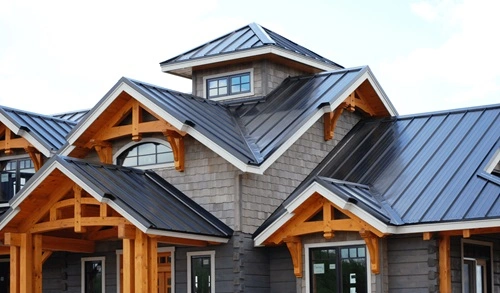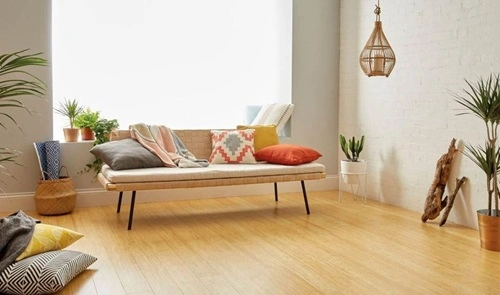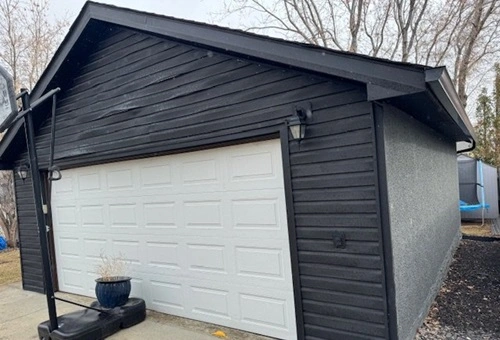When it comes to roofing materials, metal roofs have grown increasingly popular due to their durability, energy efficiency, and modern aesthetics. Once considered a niche option, metal roofing is now a mainstream choice for residential, commercial, and industrial buildings. However, while metal roofs offer a range of benefits, they also come with some potential drawbacks.
This article explores the pros and cons of metal roofs, helping you decide if this roofing material is the right choice for your property.
What is a Metal Roof?

A metal roof is a roofing system made from various types of metal, including aluminum, steel, copper, or zinc. Available in different styles such as standing seam panels, corrugated sheets, and metal shingles, these roofs are coated to prevent rusting and to enhance their durability. Their versatility makes them suitable for a variety of architectural designs, from modern to traditional.
The Pros of Metal Roofs
1. Durability and Longevity
One of the most significant advantages of metal roofs is their durability. A well-installed metal roof can last 40 to 70 years or more, far outlasting traditional asphalt shingles, which typically last 20 to 30 years. Metal roofs are resistant to cracking, shrinking, and warping, ensuring long-term reliability.
2. Weather Resistance
Metal roofs are highly resistant to extreme weather conditions, including heavy rain, snow, hail, and high winds. Their non-combustible nature also makes them fire-resistant, adding an extra layer of safety. This durability makes them an excellent choice for areas prone to harsh climates or natural disasters.
3. Energy Efficiency
Metal roofs are known for their energy-efficient properties. They reflect sunlight, reducing heat absorption and keeping homes cooler during the summer. This can lower cooling costs by up to 25%, making them an eco-friendly option. Many metal roofs are also compatible with insulation systems to enhance thermal efficiency in colder climates.
4. Eco-Friendly and Sustainable
Metal roofing materials are often made from recycled content, and they are fully recyclable at the end of their lifespan. This reduces waste and makes metal roofs a sustainable choice for environmentally conscious homeowners.
5. Low Maintenance
Compared to other roofing materials, metal roofs require minimal maintenance. Periodic inspections to clear debris and ensure screws or fasteners remain tight are typically sufficient. Metal roofs are also less prone to issues like mold, mildew, and insect infestations.
6. Aesthetic Versatility
Metal roofs come in a wide range of colors, finishes, and styles, allowing homeowners to achieve virtually any desired look. Whether you prefer the sleek lines of standing seam panels or the traditional appearance of metal shingles, there’s an option to suit your aesthetic preferences.
7. Lightweight Material
Metal is significantly lighter than traditional roofing materials like clay tiles or concrete, which reduces the load on a building’s structure. This can simplify installation and even allow for retrofitting over existing roofing without requiring structural reinforcement.
8. Increased Home Value
A metal roof can enhance the resale value of a home. Its long lifespan, energy efficiency, and modern appeal are attractive features for potential buyers, making it a worthwhile investment.
9. Snow and Ice Shedding
In snowy climates, metal roofs are particularly advantageous because their smooth surface allows snow and ice to slide off easily, preventing buildup that can lead to structural damage or leaks.
10. Compatibility with Solar Panels
Metal roofs are ideal for mounting solar panels. Their durability ensures they can support the additional weight without requiring frequent roof replacements, making them a practical choice for homeowners adopting renewable energy solutions.
The Cons of Metal Roofs
1. High Initial Cost
One of the biggest drawbacks of metal roofs is their upfront cost. Metal roofing materials and installation are more expensive than traditional options like asphalt shingles. While the long lifespan can offset this cost over time, the initial investment may be prohibitive for some homeowners.
2. Noise Levels
During heavy rain or hailstorms, metal roofs can be noisier than other materials. While adding insulation or soundproofing layers can reduce this noise, it adds to the overall cost of the roof.
3. Potential for Denting
Although metal roofs are generally durable, certain types of metal, such as aluminum or copper, are softer and more prone to denting under heavy impact, such as hail or falling branches. Steel roofs are less susceptible to denting but can still be affected under extreme conditions.
4. Expansion and Contraction
Metal roofs expand and contract with temperature changes. Over time, this thermal movement can loosen fasteners and cause panels to shift, potentially leading to leaks. Proper installation and high-quality materials can mitigate this issue.
5. Installation Challenges
Installing a metal roof requires specialized skills and tools, meaning it’s not a DIY-friendly option for most homeowners. Hiring experienced professionals is essential to ensure proper installation, which can increase labor costs.
6. Limited Color Retention
Although metal roofs come in a variety of colors, some finishes may fade or chalk over time due to UV exposure. While high-quality coatings can resist fading, they may come at a higher price.
7. Slippery Surface
Metal roofs can become very slippery when wet or covered in snow, posing a safety risk during inspections or repairs. Homeowners must exercise caution when walking on metal roofs or hire professionals for any necessary maintenance.
8. Potential for Rust
While most metal roofs are treated with protective coatings to prevent rust, scratches or improper maintenance can expose the underlying metal to moisture, leading to corrosion. Regular inspections are necessary to maintain the roof’s integrity.
9. Limited Availability of Skilled Installers
Metal roofing is a specialized field, and not all contractors have the necessary expertise. Choosing an inexperienced installer can lead to improper fitting, reducing the roof’s effectiveness and lifespan.
10. Not Suitable for All Architectural Styles
While metal roofs are versatile, they may not suit every architectural style. For instance, traditional homes with intricate or historical designs may not achieve the desired aesthetic with metal roofing.
Who Should Consider a Metal Roof?
Metal roofs are a great choice for:
- Homeowners seeking a long-lasting, durable roofing solution.
- Individuals living in areas with extreme weather conditions, such as hurricanes, heavy snow, or wildfires.
- Eco-conscious homeowners looking for sustainable and recyclable roofing materials.
- Those willing to invest upfront for long-term savings on energy and maintenance costs.
- Properties that aim for a sleek, modern, or industrial aesthetic.
However, they may not be ideal for homeowners with tight budgets or those who prioritize quieter roofing options.
Tips for Choosing and Maintaining a Metal Roof
- Select the Right Material: Choose the metal type (e.g., steel, aluminum, copper) that best fits your budget, climate, and durability needs.
- Work with Experienced Installers: Hire a reputable contractor with experience in metal roofing to ensure proper installation and avoid future issues.
- Invest in Quality Coatings: Opt for roofs with high-quality finishes to resist fading, rust, and wear.
- Perform Regular Inspections: Check for loose fasteners, scratches, or debris buildup to maintain the roof’s condition.
- Add Insulation for Noise Control: If noise is a concern, invest in proper underlayment or insulation to dampen sound during storms.
Conclusion
Metal roofs offer an impressive combination of durability, energy efficiency, and modern aesthetics, making them an excellent investment for many homeowners. Their long lifespan, low maintenance requirements, and resistance to extreme weather conditions provide significant value over time. However, the higher upfront cost, potential for noise, and specialized installation requirements may be drawbacks for some.
By understanding the pros and cons of metal roofs, you can determine whether they align with your needs, budget, and design preferences. With proper installation and maintenance, a metal roof can enhance your home’s functionality, appearance, and value for decades to come.



